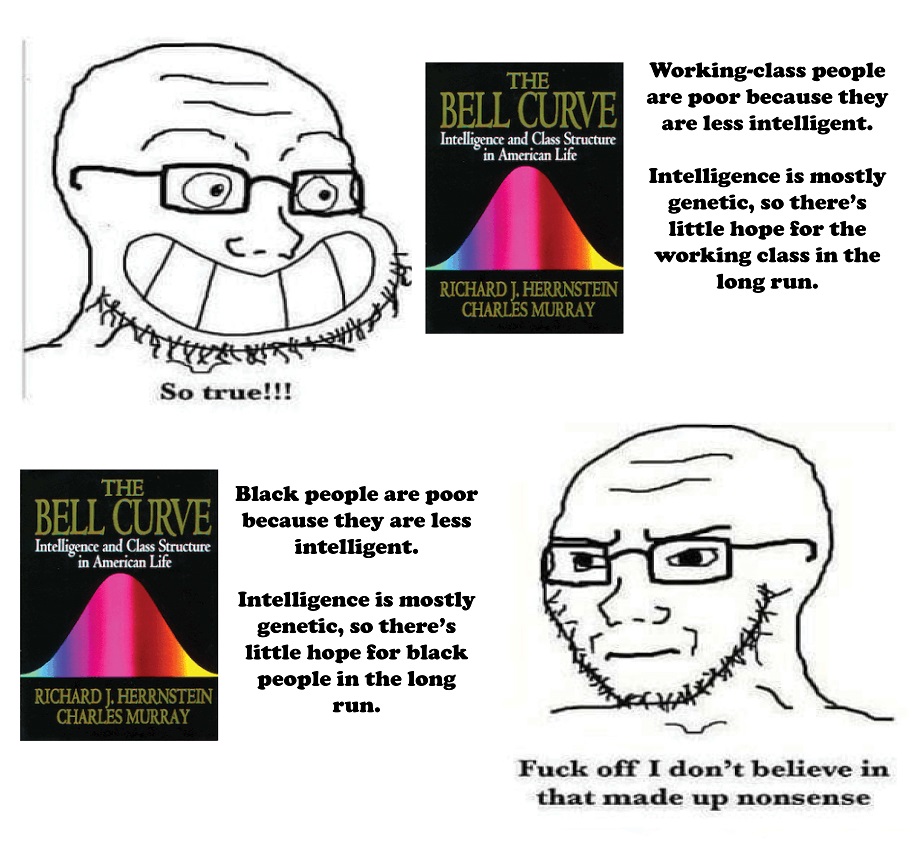
The “structural racism” conspiracy theory is everywhere nowadays. Most media consumers take it for granted that white people are to blame for black and brown economic and academic underachievement. But people trained in psychological science, who understand the real causes of behavioural phenomena, know this theory is crap. This essay explains how they know.
Any quality scientist will tell you that the value of a scientific theory is a function of its predictive power.
This has always been the case. Back in the day, when learned people discussed astronomical phenomena, the greatest among those scholars were able to accurately predict solar and lunar eclipses. The theories that correctly predicted eclipse seasons were praised and committed to memory or written down; the theories that incorrectly predicted eclipse seasons, or failed to predict them, were denounced and forgotten.
This ongoing process of refining theories, based on which ones best predicted the outcomes of experiments, evolved into the scientific method. Today, the scientific method involves taking multiple different theories and subjecting them to experiments with various conditions. Then the scientist compares the theories to see which best fits the resulting data.
When the Western World opened its borders to mass immigration from Far East Asia in the 1990s, there were two major theories about how successful it would be.
The structural racism theory predicted that these immigrants would do poorly. This theory held that the low economic and academic achievement of blacks and browns was the result of white prejudice, and, since those whites had no reason to be less prejudiced against Asians, those Asians would also have low economic and academic achievement.
The biological realism theory predicted that these immigrants would do well. It had been known since shortly after World War II that Japanese, Korean and Chinese populations scored as highly as European ones on psychometric measures of intelligence. Because economic and academic achievement is primarily a function of intelligence, biological realists predicted that Asian immigrants would have high economic and academic achievement.
In fact, the majority of Far East Asian immigrants did very well upon immigrating to the West. They all faced some degree of prejudice from the native populations, but few of them were impacted heavily enough by this to remain poor; Asian Americans have the highest net wealth and highest average income of any American racial group.
This outcome repudiated the structural racism theory, and supported the biological realism theory. But this is not the only case where the latter showed itself to have more predictive power than the former.
Another test of theories involved the relative developmental prospects of China, India and Africa. After World War II, China, India and most of Africa were at a similar level of poverty, i.e. undeveloped. But the Western plan was to develop all of these territories to the maximum extent possible, as quickly as possible.
The structural racism theory predicted that all of these territories would develop at a similar rate. Absent the white oppression that had held them back during the Colonial Era, and absent the white oppression that held back blacks, browns and natives in colonial countries, there was no reason to assume anything other than uniform progression to Western levels of wealth.
The biological realism theory, by contrast, predicted that China would develop faster than India, which would develop faster than Africa. This prediction was based on the fact that psychologists knew the IQ scores of these groups were different.
The Chinese scored at a similar level to white people, or even higher. India was about one standard deviation below that. Africa was about one standard deviation below India. So the biological realists predicted that China would develop the fastest, Africa the slowest, and India in between.
By 2021, the GDP per capita (PPP) of China was $18,931, that of India $7,333, and most African countries between $5,000 and $1,000. These differences were just as predicted by the biological realists. The structural racism theories are left floundering for an explanation as to why high-IQ China has outstripped medium-IQ India and low-IQ Africa, when none of the three are controlled by whites. They are left spouting nonsense about “white adjacency”.
In summary, the biological realism theory of explaining group differences in economic and academic achievement has proven itself to have far greater predictive power than the structural racism theory. In fact, the structural racism theory has no predictive power, and can be rightly considered a conspiracy theory pushed for political reasons, and not a scientific one.
*
If you enjoyed reading this essay/article, you can get a compilation of the Best VJMP Essays and Articles of 2020 from Amazon for Kindle or Amazon for CreateSpace (for international readers), or TradeMe (for Kiwis). A compilation of the Best VJMP Essays and Articles of 2019, the Best VJMP Essays and Articles of 2018 and the Best VJMP Essays and Articles of 2017 are also available.
*
If you would like to support our work in other ways, please consider subscribing to our SubscribeStar fund. Even better, buy any one of our books!




